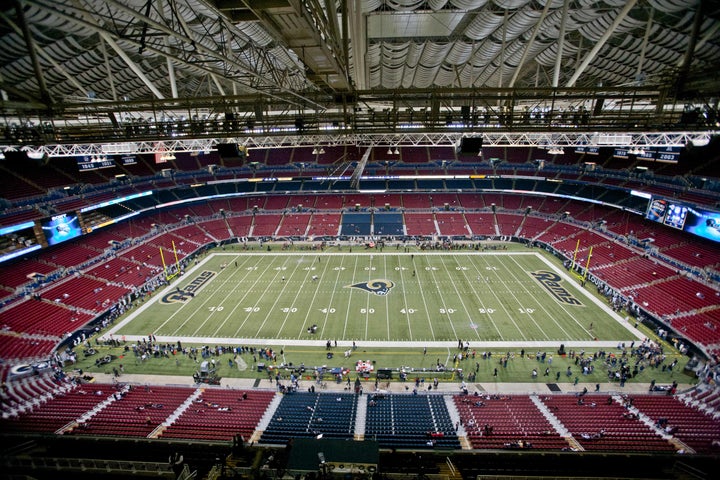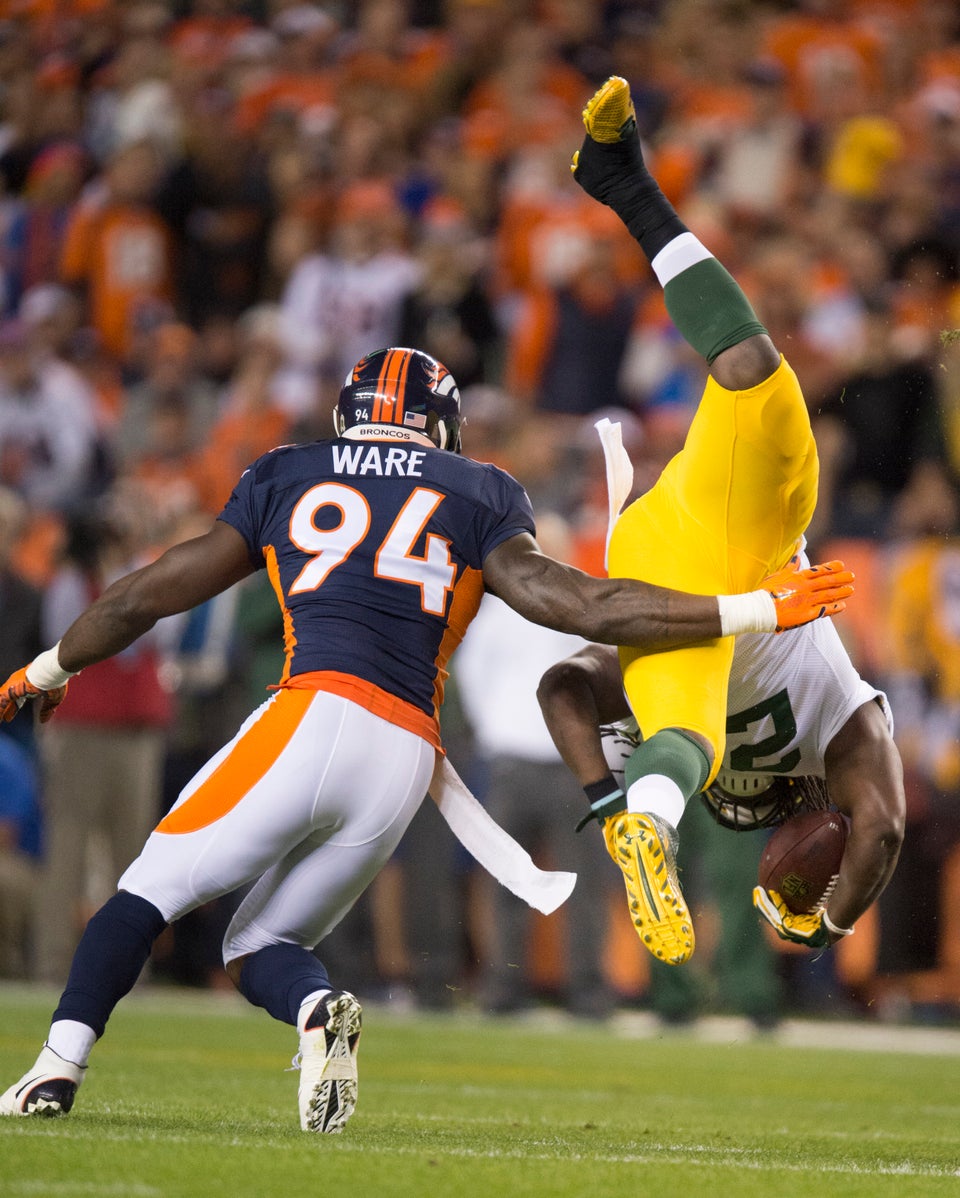
The St. Louis Rams' decision to relocate to Los Angeles brought a double dose of bad news for the city's residents on Tuesday: Not only are they losing the football team they've hosted for the last 21 years, they also still have to pay for the stadium they built to lure the Rams to their hometown in the first place.
At the beginning of 2015, city and state taxpayers still owed more than $100 million in debt on the bonds used to finance the Edward Jones Dome, the stadium St. Louis put $280 million in public funds behind in 1995.
It isn't scheduled to pay off that debt until at least 2021, and that could be more difficult without the Rams and the $500,000 rent payment the team made each year. The city itself owes $5 million per year over that period, and the loss of the Rams could increase costs in the short-term.
St. Louis Mayor Francis Slay acknowledged the issue at a news conference on Wednesday, though he attempted to strike a positive tone about the city's plans to pay off the stadium.
"With the Rams moving, the city will lose money in the short run," Slay said. "But without the Rams in the Dome, we will be able to book more citywide conventions, which will help offset the revenue loss."
Slay blamed Rams owner Stan Kroenke and the NFL for a decision to "grab at the money" in the relocation to Los Angeles. While that may be true, the manner in which the team left St. Louis underscored the way backstopping stadiums with taxpayer funds often benefits already wealthy owners instead of the public.
It was, after all, a curious provision in the lease deal that helped attract the Rams to St. Louis -- and ultimately allowed them to leave taxpayers footing a larger portion of the bill, without a football team to boot.
As part of the rental agreement the city and state signed with the Rams in 1995, the team could vacate the lease with a year's notice if the Edward Jones Dome lost its status as a "first-tier" NFL venue (that is, among the top eight NFL stadiums).
A rash of new stadiums across the league in the last two decades ensured that the dome no longer qualified, and Kroenke and the Rams indeed chose to trigger the option to get out of the lease at the beginning of 2015.
A year later, after largely one-sided negotiations for a new stadium that Kroenke barely acknowledged except to criticize, the Rams are headed back to southern California, where they played from 1946 until 1994.

There is, however, a bit of good news in the Rams' relocation for state and local taxpayers.
The St. Louis Stadium Task Force, an effort created by Missouri Gov. Jay Nixon (D), proposed spending more than $470 million in city, county, and state tax dollars to build the Rams a new stadium on the banks of the Mississippi River.
Whether that effort was ever popular was hard to judge -- the task force succeeded in getting around public referendum requirements -- but saving that money may ultimately benefit the city and state.
Research has shown that pro sports franchises have some happiness and quality-of-life benefits for local residents, but it has also overwhelmingly found that spending public money on the stadiums they play in has little economic benefit and rarely creates the jobs or prosperity the backers promise, just as they did when the Edward Jones Dome was built.
"As economists, we certainly understand the quality-of-life issue, and it’s a sad day to be a Rams fan in St. Louis," said Victor Matheson, a College of the Holy Cross sports economist and leading stadium researcher. "That said, it’s a pretty good day to be a taxpayer in St. Louis."
Economists in other cities aren't the only ones heralding the chance St. Louis and Missouri now have to spend the money more wisely.
John Ammann, a Saint Louis University law professor, sued the city on behalf of multiple clients in an effort to reinstate the requirement that St. Louis hold a public referendum before it devoted tax money to sports venues.
One of his clients was a formerly homeless man who argued that the city should spend the money on housing programs and other initiatives to benefit struggling low-income residents, instead of on a new stadium that Kroenke, who is privately financing the Rams' new home in Inglewood, California, could afford to build himself.
“Nobody is happy that the Rams are leaving. But we are glad taxpayers aren't putting out hundreds of millions of dollars for a new stadium."”
"Our clients are pleased that this money isn’t going to a stadium," Ammann told The Huffington Post on Wednesday.
"Nobody is happy that the Rams are leaving. But we are glad that taxpayers aren't putting out hundreds of millions of dollars for a new stadium," Ammann said. "It's a bittersweet day."
The city could, however, elect to spend the money on a new stadium in future efforts to attract another NFL team. The Oakland Raiders are still seeking a new stadium and have at times been mentioned as a team St. Louis could pursue.
A Raiders move may not be likely, but the mere possibility is why Ammann and his clients aren't dropping their lawsuit, which should return to court in the spring.
"There’s some real accountability questions there," Ammann said. "We want the public right to vote on this restored."
Also on HuffPost:

